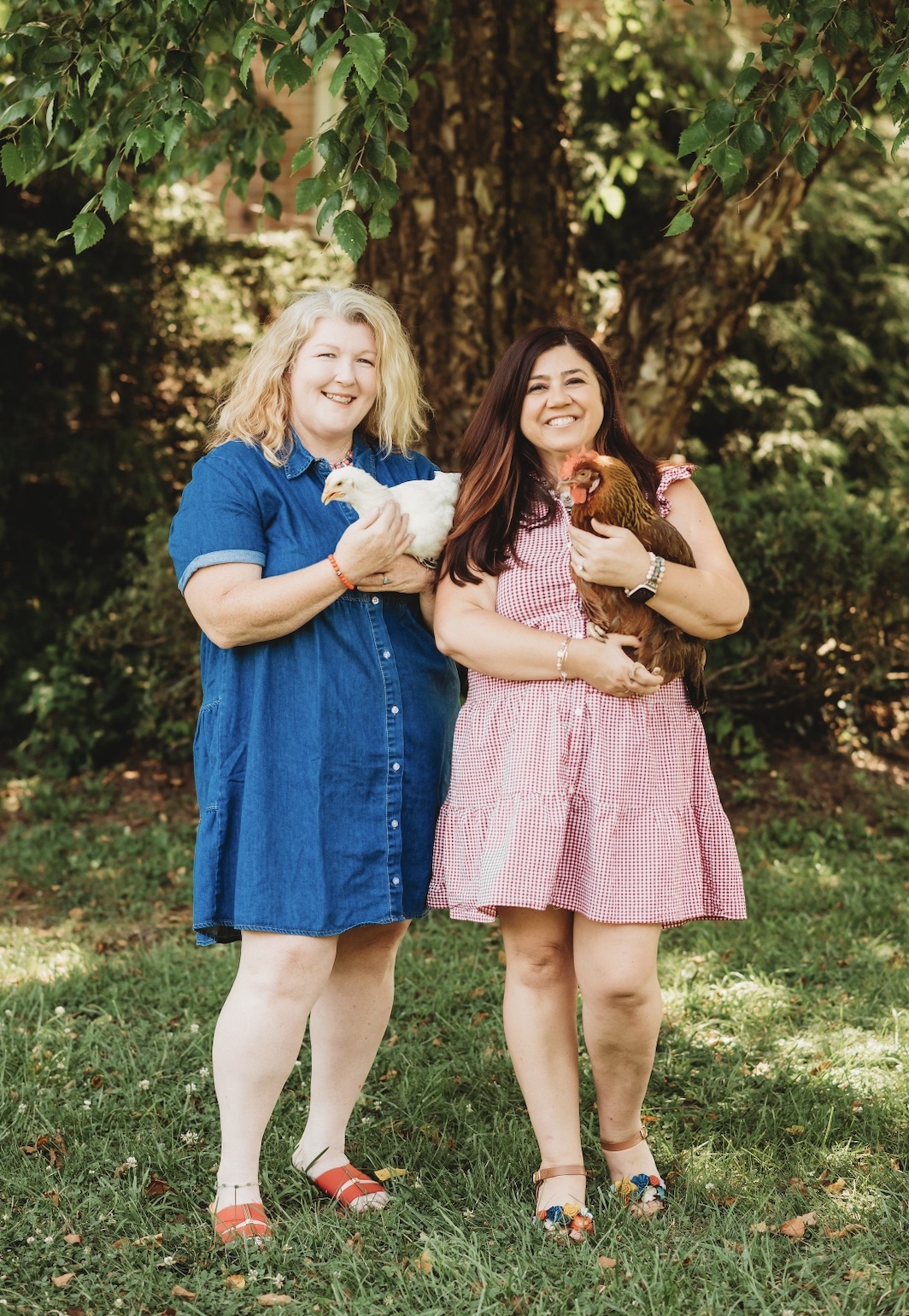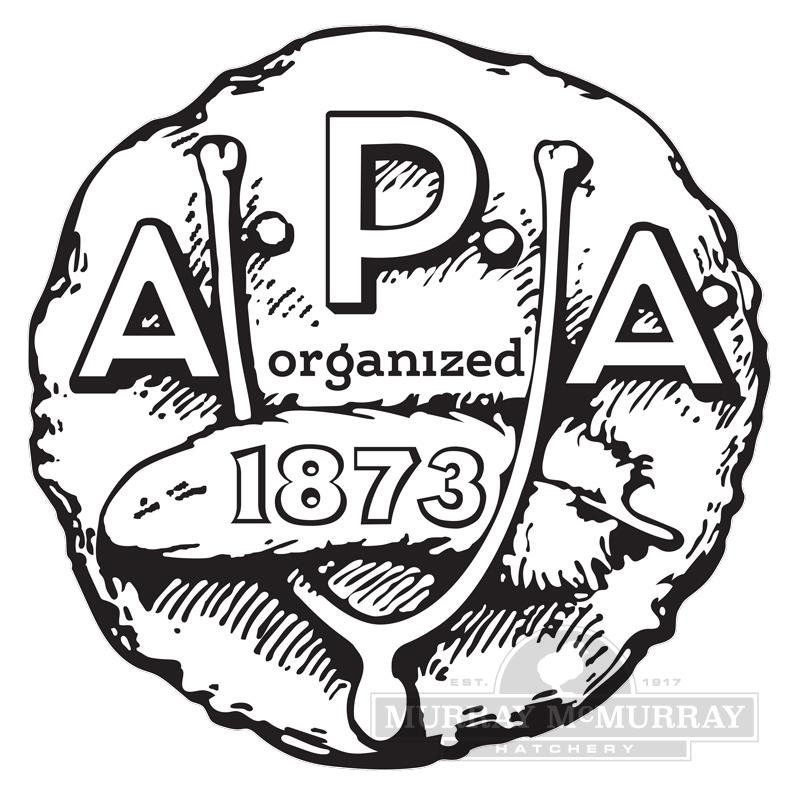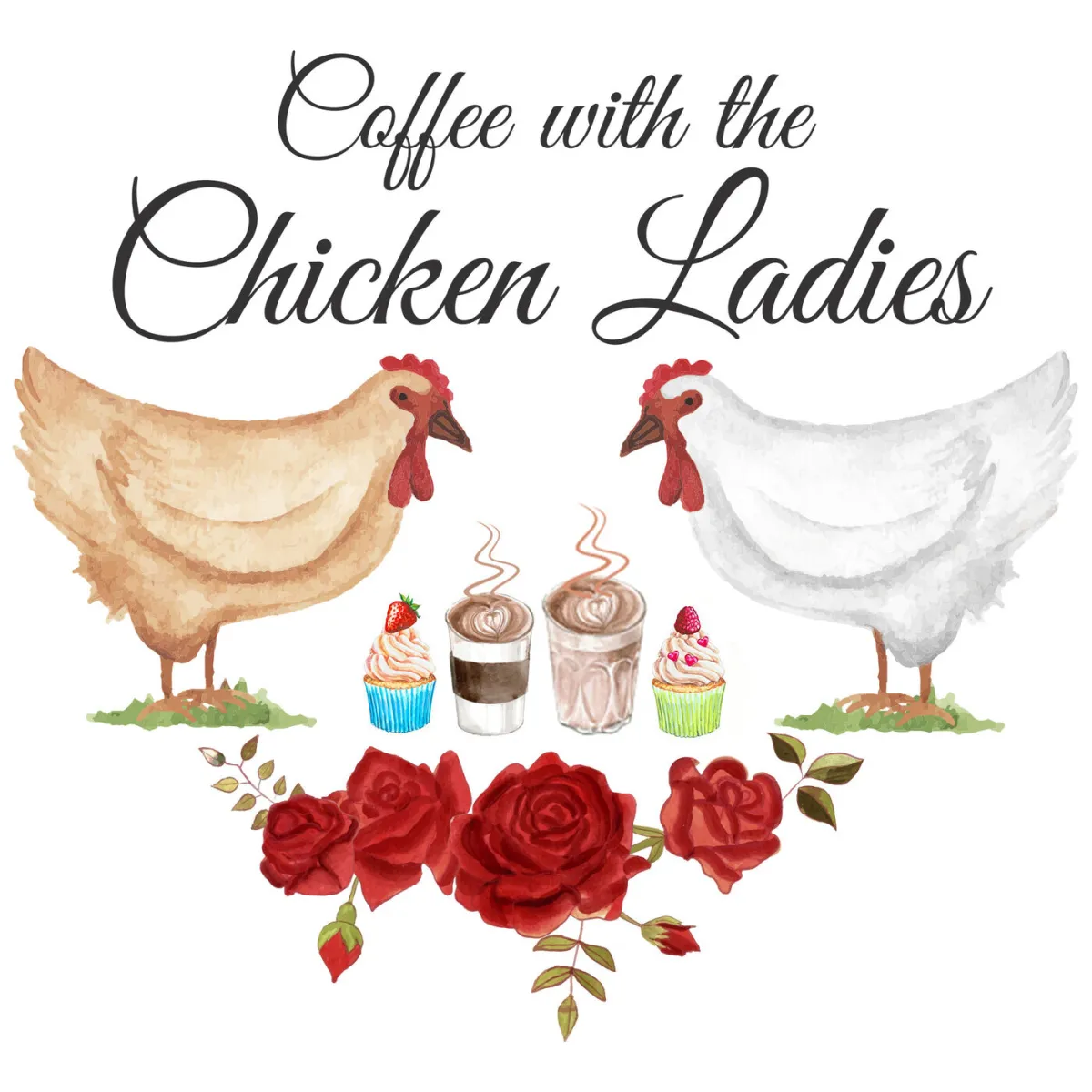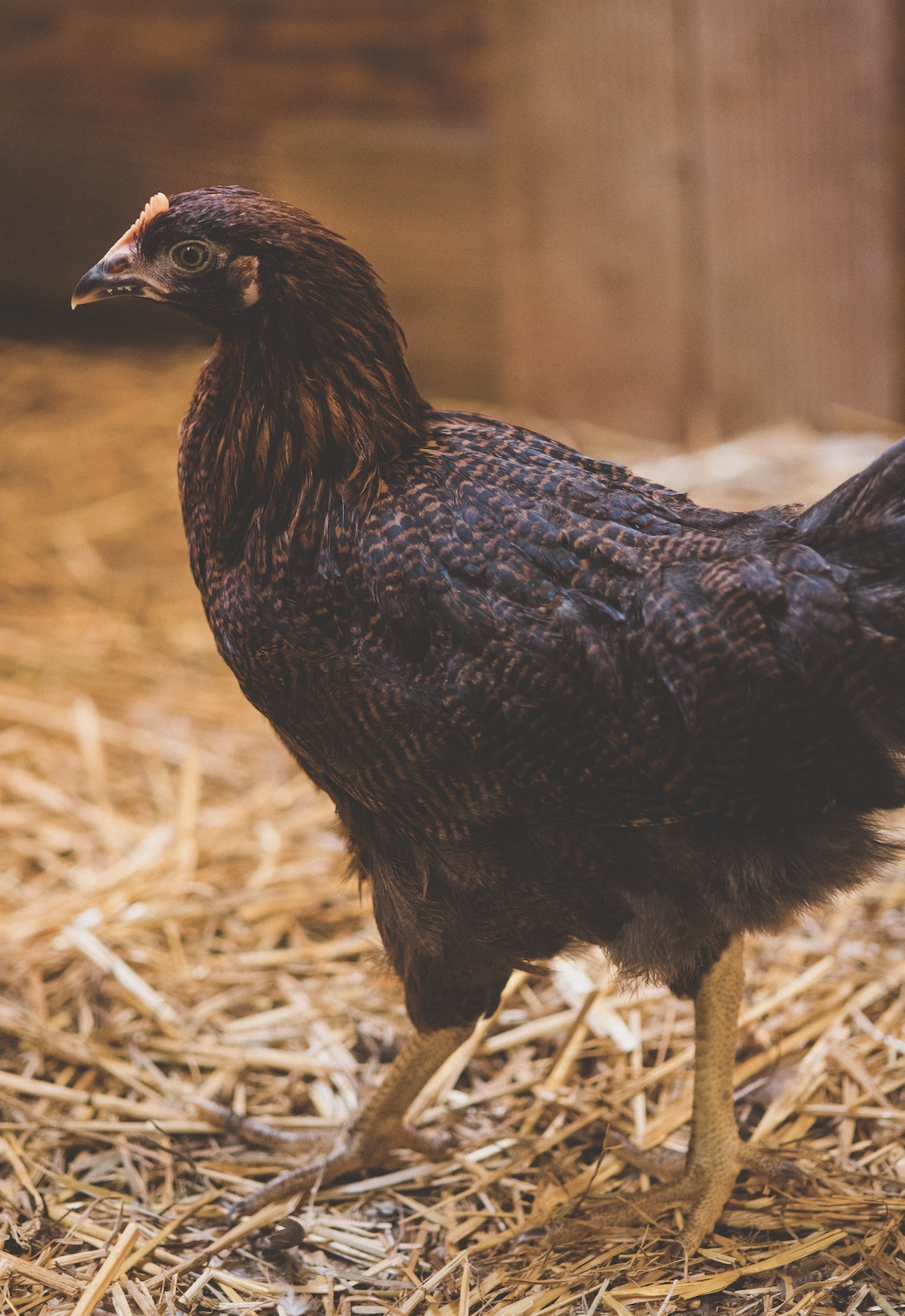The Plymouth Rock chicken is one of the most popular breeds in the US, and they have a strong following in the rest of the world as well. They’re a beautiful dual-purpose breed that is as much at home on a small farm as they are on the show table. The name, Plymouth Rock, has led some to believe that this chicken arrived in the US on the Mayflower, but this is not true. The Mayflower reached land in 1620, and the first Plymouth Rock chickens didn’t show up for another 230 years. (For more about chickens on the Mayflower, check out Episode 51 from last Thanksgiving.)
Plymouth Rock Heritage Chickens | Basic Breed Information
Plymouth Rocks are large, handsome chickens with generally laid back personalities. They come in a wide variety of colors. Rocks have yellow legs, a straight comb, red faces and earlobes, and long, broad bodies. Roosters weigh in around 8-9.5 lbs and hens at 6-7.5 lbs. Plymouth Rocks come in Barred, White, Buff, Silver Pencilled, Partridge, Columbian, and Blue. The Barred Rock is probably the most familiar of the breed, but the Silver Pencilled and Partridge Rocks will quickly turn heads!
The Barred Rock appeared in the American Poultry Association Standard of Perfection in the first edition in 1874. The Barred was followed by the White in 1888, the Buff in 1894, the Silver Pencilled in 1907, the Partridge and Columbian in 1910, and the Blue in 1920. The breed remained very popular until after the World Wars. However, like most other Heritage breeds, declined with the advent of industrial farming. Fortunately, numbers are high enough now that they appear in the Recovering category of The Livestock Conservancy’s Conservation Priority List.
Plymouth Rock Heritage Chickens | History
In the mid-to-late 1800s, there were several breeders working on Plymouth Rock breeding programs in the New England area. They all had the same goal – a true dual purpose American chicken. The goal was accomplished, even though there were at least seven breeders claiming that their strain was the true Plymouth Rock.
Various sources mention that the Plymouth Rock was first introduced to the public in 1850 by John Bennett from Massachusetts, author of the American Poultry Book (1851). Bennett claimed that he developed and named the breed. His foundational mix included Cochins, Dorkings, and the recently arrived West Indian chickens. For whatever reason, these chickens did not prosper, and the Plymouth Rock slid off the page for a couple of decades.
1869 and 1870, they came to light again. Their resurgence came with the Barred Rock, beloved of so many. Barred Plymouth Rocks were the first color developed, and to this day, they remain the most popular variety with backyard or hobby chicken farmers.
Plymouth Rock Heritage Chickens | Genetics
According to the APA Standard of Perfection, the foundation breeds are supposed to be a Dominique rooster and a Black Cochin or Black Java hen. The barring gene would have originally come from the Dominique rooster. Males have two copies of the gene and females have one, which causes incomplete pigmentation on dark feathers. The result is a black feather with bars of no pigment – white in appearance. The Barred Rock, especially the hens, tend to have a wider and more clearly graphic and regular black/white bar than the Dominique. Because the roosters have two copies of the gene, their feathers are a bit lighter in color and have slightly smaller barring. Barred Rocks are also extremely popular foundation breeds for auto-sexing chickens.
Silver Pencilled Rocks are especially beautiful. Their foundation breeds include Dark Brahmas and Wyandottes, both pencilled birds. The Partridge Rock is also very pretty. Their foundation breeds include Partridge Cochins, Dark Cornish, Brown Leghorns, and Golden Laced Wyandottes. White Rocks came from a couple of different strains, including a white sport (natural mutation) of the Barred Rock.
Plymouth Rock Heritage Chickens | Laying Statistics
Plymouth Rock hens are good layers of large brown eggs, producing around 200+ eggs per year for their first few years. That averages out to about four eggs per week. Hens aren’t known for going broody. While their laying will slow down after the first couple of years, they’ll still lay a respectable number of eggs as they age. Hens are decent winter layers, too.
Plymouth Rock Heritage Chickens | Ideal Living Conditions
Plymouth Rocks are great with people. They’re friendly and laid back and happy to just hang out with their families. This breed makes a great addition to a mixed flock, but you’ll want to keep a close eye on flock dynamics and make sure they have enough space. On occasion, Plymouth Rocks can become bullies if bored, or when they are in a flock with very docile chickens beneath them in the pecking order.
Rocks are fairly cold hardy. You’ll still need to take precautions to protect their combs from frostbite, especially the roosters. They manage reasonably well in hot weather but because they’re large chickens, they’ll need plenty of shade during the hottest months.
Plymouth Rocks are good foragers and will appreciate as much free range time as you can give them, too! As a thank you, they will gobble up pests and insects whenever you give them the opportunity.
Plymouth Rock Heritage Chickens | An All-Purpose Breed
As a true dual-purpose breed, Plymouth Rocks are an excellent sustainable source for both meat and eggs, which makes them popular among farmers and homesteaders. Their quiet, docile nature lends well to families and urban backyard settings, too. Rocks also make great show birds, especially the flashier color varieties. As an added bonus, having so many color varieties can keep your flock looking brilliant and diverse – perfect for those of us who like to relax and watch our chickens do their thing. Maybe we should call them an all-purpose breed!
Plymouth Rock Heritage Chickens | McMurray Hatchery Varieties
McMurray Hatchery has several colors including Barred and White. Their Silver Pencilled, Partridge, and Buff Plymouth Rock flocks are APA Certified, meaning the flocks meet the APA Standard of Perfection.

Holly Callahan-Kasmala grew up as a 4-H kid on a small horse farm. She has been keeping chickens for more than 20 years, and is passionate about Heritage chickens and helping people find the right breed for their needs. Holly has an MA in History, and is a long-time fiber artist/teacher. In addition to keeping Heritage breed chickens and rare breed sheep, she also grows heirloom cotton, dye plants, and all kinds of heirloom vegetables, fruit, and flowers on her small Maryland farm. She is the creator and co-host of Coffee with the Chicken Ladies Podcast.
Chrisie DiCarlo is a retired veterinary technician with a passion for helping people care for their poultry. During her 15 years in the field, she managed a technical trauma nursing care team in a busy urban veterinary hospital ER. She gave up her career to be a stay-at-home mom to her two amazing daughters. Chrisie has been keeping chickens for more than 7 years. She also loves growing herbs, fruit, and flowers on her small Maryland farm. She is the creator and co-host of Coffee with the Chicken Ladies Podcast.
Catch up on episodes of Coffee with the Chicken Ladies Podcast, stay up to date on their website, and follow along on social media.
Photo of a Barred Rock hen courtesy of Holly Callahan-Kasmala and Chrisie DiCarlo.
Photo of a Silver Penciled Rock courtesy of Carly Norris.
Photo of a Partridge Rock courtesy of Teddi Yaeger.
What does it mean to be APA Certified?
McMurray Hatchery has several flocks certified by the American Poultry Association (APA) that meet the APA Standard of Perfection. Five of Murray McMurray Hatchery’s breeds are currently certified, including the White Polish, White Langshan, and three varieties of Plymouth Rocks: Buff, Partridge, and Silver Penciled.
“When the APA contacted us, we jumped at the chance to show that we have real quality stock. This certification validates our breeder flock practices,” says McMurray President, Tom Watkins. “We believe breeds should meet both type and function when it comes to the Standard. Preserving breed genetics and ensuring that breeds meet the function and vigor they were developed for, in addition to type and conformation, is important to us. Our partnering with the APA brings awareness to the Standards, highlights some of our stand-out breeds, and shows the quality of poultry we produce.”
Our APA Certified flocks are truly versatile. They make for excellent breeding stock and can be extremely competitive show birds, too. Many of these breeds are also productive and friendly, meaning they can adapt well to both backyards and farms. These lines highlight the quality that we strive for here at the Hatch.

Coffee with the Chicken Ladies Podcast
Coffee with the Chicken Ladies is a weekly podcast hosted by Chrisie DiCarlo and Holly Callahan-Kasmala. The podcast covers all things Pet Chicken! Each episode includes a breed spotlight, a relevant chicken keeping topic, a recipe using fresh eggs, and some retail therapy! The Chicken Ladies also feature interviews with expert guests who span the chicken keeping world. You’ll find the latest podcast episodes on their website, as well as other podcasting platforms.
You can learn more about Partridge Rock Heritage chickens by listening to Episode 25 and Episode 105 of the podcast.





